ExamOne quality is going where no other paramedical company has gone before. Since late 2011, ExamOne has been intentional about stepping up efforts to raise the bar on quality, specifically in the area of paramedical quality. One of the challenges inherent with insurance collections is that the majority of them are performed in a mobile environment versus a clinically controlled environment. This can potentially have an adverse effect on certain specimen values.
This blog will be focusing specifically on Not Valid Glucose (NVG) rates and the multi-decade challenge for reporting viable glucose values from mobile collections. The delayed centrifugation allows the red and white cells in the blood to utilize the glucose. Every hour a specimen remains uncentrifuged, the level of glucose continues to drop. Once cells are separated from the serum, the glycolysis process stops. The prevailing thought is that NVG is a seasonal issue. However, years of laboratory data reveal that NVG occurs throughout the year and it consistently spikes higher in the warmer months.
 With a close ear to clients and where they place value, one of the things most commonly expressed to Medical Director, Dr. Jim Palmier, has been feedback regarding high NVG rates (NVG occurs when the serum glucose test is < 60 mg/dL). Dr. Palmier knew there was a tremendous opportunity to improve NVG rates and after consulting with internal teams, he shared a vision to address the ongoing challenge of NVG with mobile insurance collections and provided insight for what an improvement shift could mean to the industry.
With a close ear to clients and where they place value, one of the things most commonly expressed to Medical Director, Dr. Jim Palmier, has been feedback regarding high NVG rates (NVG occurs when the serum glucose test is < 60 mg/dL). Dr. Palmier knew there was a tremendous opportunity to improve NVG rates and after consulting with internal teams, he shared a vision to address the ongoing challenge of NVG with mobile insurance collections and provided insight for what an improvement shift could mean to the industry.
Our laboratory performed a specimen stability study and has incorporated findings from that study into our operations. With increased attention around NVG, a decision was made in 2012 to update the initial study and expand it to include temperature variables. The goal of the new study was to mimic realistic conditions before specimens reached the laboratory. Results were studied for approximately a dozen laboratory values in three temperature ranges. Specimen values were evaluated pre and post centrifuging. The results of that study conclusively proved that keeping specimens in a cold environment prior to centrifuging was critical to maintaining specimen integrity and preventing NVG.
Later in 2012, ExamOne was able to obtain examiner level detail of specimen results and began a messaging campaign. The information being shared not only showed them their individual to examiners rate, but also led to increased awareness within the offices. The impact of those communications were effective due to frequency, delivery and actionable examiner data. Additionally we launched a pilot program to keep specimen temperatures low until centrifugation.
Pilot examiners were selected based on volume and NVG performance. They were provided an insulated bag with ice packs and instructed to perform business as usual except to transport specimens in the new bag. Early results indicated this could be a viable solution for helping to greatly reduce NVG. Final pilot results confirmed it.
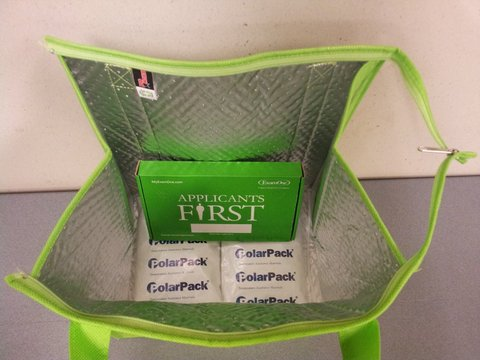 To date, our monthly year over year NVG improvement continues to be highly favorable with gains averaging more than 20%. Post pilot activity includes provisioning what is now referred to as a “Chill Out Kit” to exam offices for distribution to examiners. The efforts underway are a tangible, visible example of the improvement process cycle we follow:
To date, our monthly year over year NVG improvement continues to be highly favorable with gains averaging more than 20%. Post pilot activity includes provisioning what is now referred to as a “Chill Out Kit” to exam offices for distribution to examiners. The efforts underway are a tangible, visible example of the improvement process cycle we follow:
-
- Problem Identification
- Analysis
- Best Practice Assessment
- Implementation
- Validation
- Adjustment
As an alternative to the traditional mobile collection, ExamOne offers applicants a clinical setting at a Patient Service Center (PSC) to have their exam completed.[1]
We will continue to monitor NVG data and communicate individual examiner performance in an effort to create additional value for mobile collections while realizing sustained double-digit improvement.
[1] According to ExamOne data, specimens drawn at PSCs have an NVG rate of less than 0.1%.

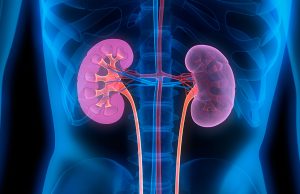
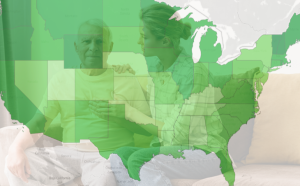
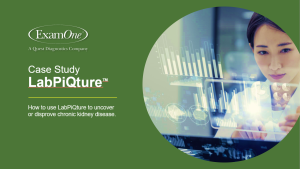
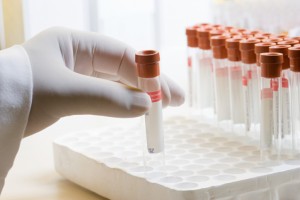

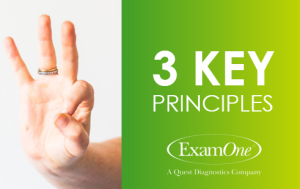






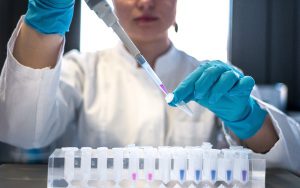
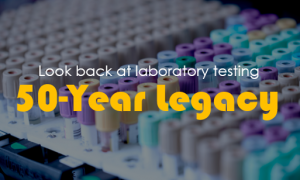





ExamOne quality is going where no other paramedical company has gone before. Since late 2011, ExamOne has been intentional about stepping up efforts to raise the bar on quality, specifically in the area of paramedical quality. One of the challenges inherent with insurance collections is that the majority of them are performed in a mobile environment versus a clinically controlled environment. This can potentially have an adverse effect on certain specimen values.
This blog will be focusing specifically on Not Valid Glucose (NVG) rates and the multi-decade challenge for reporting viable glucose values from mobile collections. The delayed centrifugation allows the red and white cells in the blood to utilize the glucose. Every hour a specimen remains uncentrifuged, the level of glucose continues to drop. Once cells are separated from the serum, the glycolysis process stops. The prevailing thought is that NVG is a seasonal issue. However, years of laboratory data reveal that NVG occurs throughout the year and it consistently spikes higher in the warmer months.
Our laboratory performed a specimen stability study and has incorporated findings from that study into our operations. With increased attention around NVG, a decision was made in 2012 to update the initial study and expand it to include temperature variables. The goal of the new study was to mimic realistic conditions before specimens reached the laboratory. Results were studied for approximately a dozen laboratory values in three temperature ranges. Specimen values were evaluated pre and post centrifuging. The results of that study conclusively proved that keeping specimens in a cold environment prior to centrifuging was critical to maintaining specimen integrity and preventing NVG.
Later in 2012, ExamOne was able to obtain examiner level detail of specimen results and began a messaging campaign. The information being shared not only showed them their individual to examiners rate, but also led to increased awareness within the offices. The impact of those communications were effective due to frequency, delivery and actionable examiner data. Additionally we launched a pilot program to keep specimen temperatures low until centrifugation.
Pilot examiners were selected based on volume and NVG performance. They were provided an insulated bag with ice packs and instructed to perform business as usual except to transport specimens in the new bag. Early results indicated this could be a viable solution for helping to greatly reduce NVG. Final pilot results confirmed it.
As an alternative to the traditional mobile collection, ExamOne offers applicants a clinical setting at a Patient Service Center (PSC) to have their exam completed.[1]
We will continue to monitor NVG data and communicate individual examiner performance in an effort to create additional value for mobile collections while realizing sustained double-digit improvement.
[1] According to ExamOne data, specimens drawn at PSCs have an NVG rate of less than 0.1%.